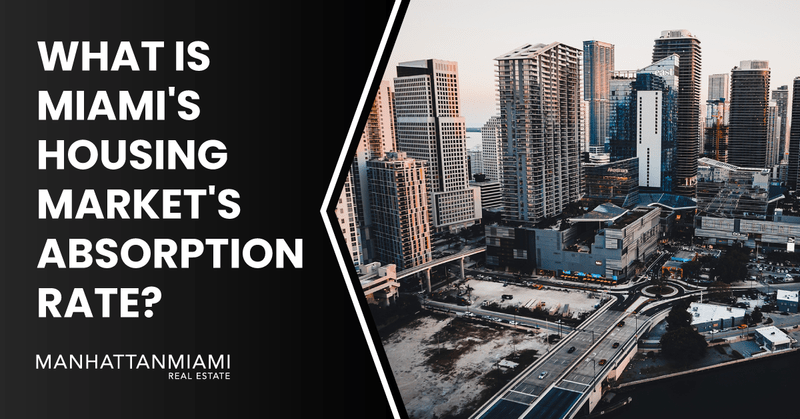
Absorption rates in real estate refer to the percentage of available real properties sold within a certain time frame. We can use absorption rates to evaluate the health of the market and to estimate the length of time properties will sit in inventory.
The higher the absorption rate, the faster homes in the market will sell. An absorption rate above 20% is a seller’s market, and one below 15% is a buyer’s market.
The formula for the absorption rates in a given market is simple:
Timeframes = one month
September 1, 2021 - September 30, 2021
# of homes sold
___________________ =
# of total homes for sale
Take the number of homes sold and divide them by the number of homes available. Make sure that the sales are all in the same time period.
Let’s use an imaginary scenario to walk through the formula. Imagine that the number of Miami homes sold in September was 10, in a market that had 23 Miami homes for sale.
10
___ = 0.43
23
Multiply 0.43 by 100 to determine the percentage.
0.43 x 10 = 43%
Now we know that 43% of the homes in this imaginary market were sold in the month of September.
The reverse of this formula will show us how long we can expect properties to stay on the market. Divide the total amount of available properties by the number sold (all during the month of September 2021).
23
_________ = 2.3 months
10
In this example, it will take 2.3 months to sell the rest of the homes.
Miami Real Estate's Current Absorption Rate
The Miami Real Estate Market has had an accelerated absorption rate. In April 2020, the metric was showing over 30 months of inventory in luxury coastal Miami home sales, but one year later the absorption rate shot up as demand surged. Inventory was expected to last just 2.6 months in April of 2021 and is still selling quickly.
Luxury condo sales in April of 2020 showed over 44 months (in May the estimate was 80 months!), but now the forecast shows only 6.5 months.
So while those pandemic months looked very scary, they were just snapshots of a market affected by a worldwide economic near-pause caused by the pandemic.
Once people were able to start picking up properties again, Miami saw a flood of purchases.
There is precedent for such an acceleration. For instance, the 2009 housing market in Miami showed a low absorption rate with high inventory that led to condo prices falling. The lower prices propelled a stalled market into a much higher absorption rate, moving properties much faster.
All this is to say that you need to look at trends and the big picture before writing off a market based on absorption rates. When you see a number like this, its predictive power holds only as long as certain factors hold because markets respond. Very little is static or stalled for long.

-2.png?width=500&height=205&name=MIAMI%20HOME%20SEARCH%20(2)-2.png)













